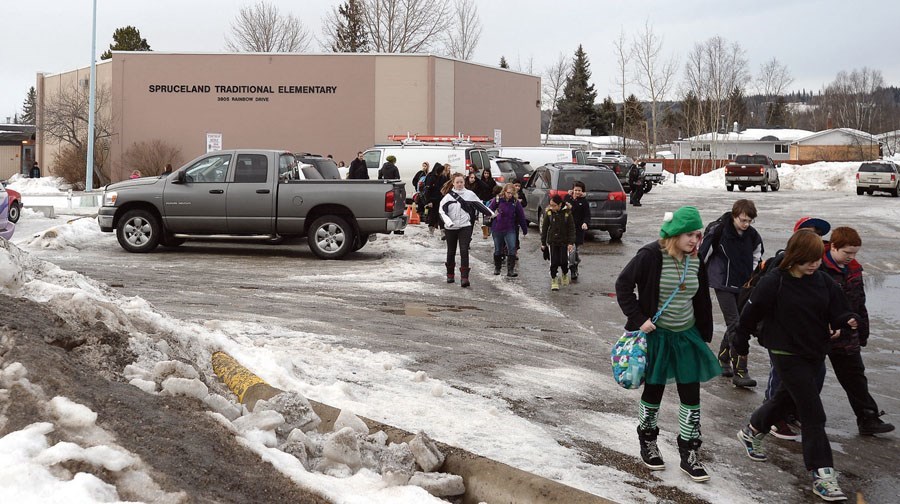Spruceland Elementary, formerly Spruceland Traditional Elementary School, will become a choice school for the arts in September.
Last year, School District No. 57's (SD57) board of education supported a decision to review the choice program at Spruceland Traditional and supported removing the term traditional from the school’s name.
The school became a traditional school in 1998, which is a type of education that is focused on an authoritarian teacher-centred delivery of instruction and individual success.
After research and consultation with the community, the review found that Spruceland Traditional was not operating in practice as a Traditional school and the only item of uniqueness the school retained was its dress code.
Principal Shannon Daines also explained that the traditional school model no longer met the needs of its diverse school community and was also not in line with the school’s commitment to truth and reconciliation.
She said when they asked the school community what they valued about Spruceland they found five major themes in the responses; commitment to community, a supportive environment, equity, inclusivity and a commitment to the arts.
If Spruceland wanted to retain its status as a choice school, it had to offer something unique that is not offered at another school in the district, so Daines explained they decided to pursue a choice arts program.
“We already had a commitment to the arts, and we already had a very robust music program and we already had a lot of other opportunities throughout the year so we decided to take a look at that and see if it was a viable option for us.”
She also noted that Spruceland has been focused on including its school community every step along the way to have their input and they’ve endorsed the progress made so far.
Daines and as well as vice-principal Stephanie Cotes and Indigenous Superintendent Pam Spooner visited several choice arts schools in the Interior and Okanagan to learn how those schools were operated and help plan how the new school would function.
She said the next step in the process will be to submit a “thought exchange” or communication with all families in SD57 to let them know what is happening and ask would they be interested in having their child attend Spruceland Community School of the Arts, and what types of art forms would they be interested in seeing a the school of the arts.
She said this will be sent out at the beginning of January so that families can have this information before they start to think about kindergarten registration for the following September.
Spruceland will also host an information session on Jan. 26 where they will be able to provide more information about what the new school will look like in September.
“We are working together so that this transition from a traditional school to an arts school is as comfortable as possible for the people who are interested in doing so,” said Daines.
Daines also explained they are still in a learning process but envision three ways in which arts will be integrated into the school.
She said the first one will be a commitment to four major art forms: music which the school already has well developed, visual arts which already happens quite often in the school, and dance with an initial focus on creative movement.
Secondly, she said the school will work to integrate arts into regular curricular items to allow students to receive information in new ways they possibly haven’t in the past and thirdly the school will have a focus on allowing children to communicate or present their learnings in alternate ways.
Trustee Bob Thompson said his home community of Dunster, B.C. near McBride used to have a Fine Arts Choice school which was closed in 2010.
“For the number of years it ran, it produced a number of excellent citizens. So, you get a lot of education through arts - numeracy, literacy, communication skills and I think this is a wonderful direction to be in,” said Thompson.
“I come from a school of performing arts. I grew up in it, music, art, dance, everything. It is a proven fact that when children work with both sides of their brain doing a task they learn, and they grow faster than just using one side,” added Board Chair Rachael Weber.
“I am so proud that you guys are here today and that you are doing this because it is a new direction.”



